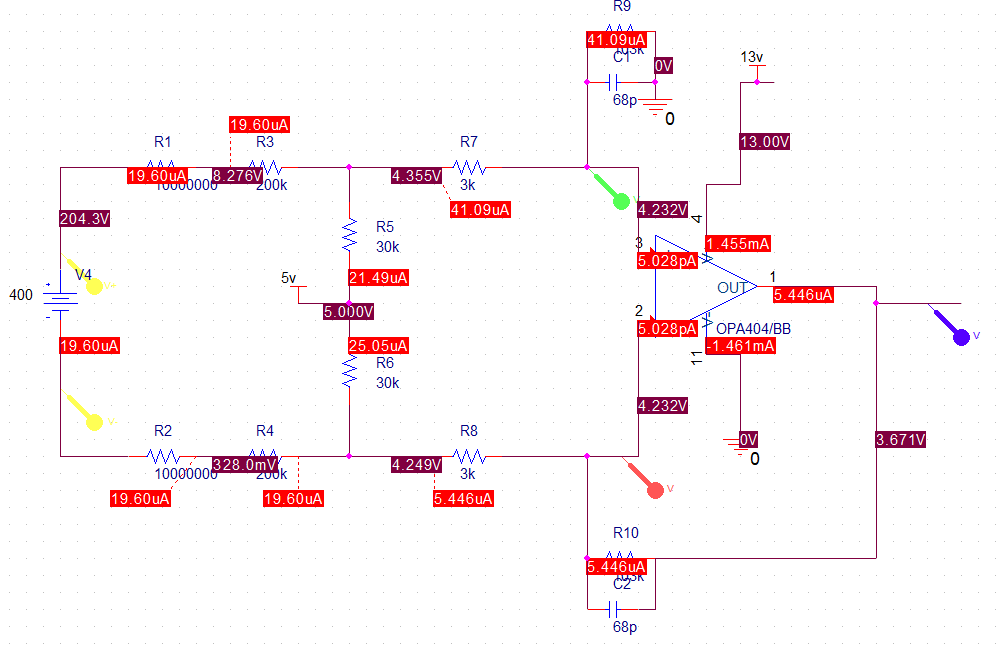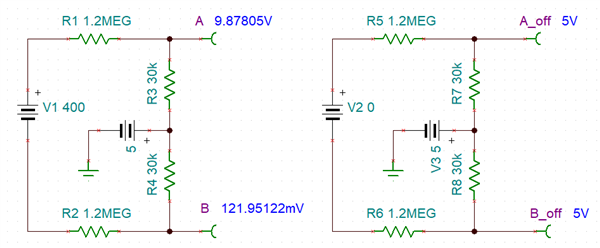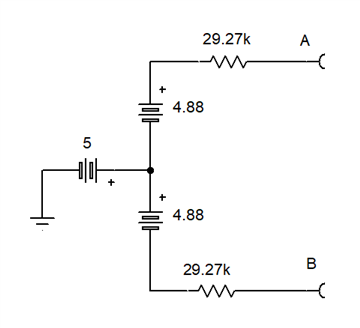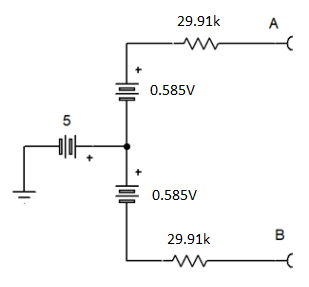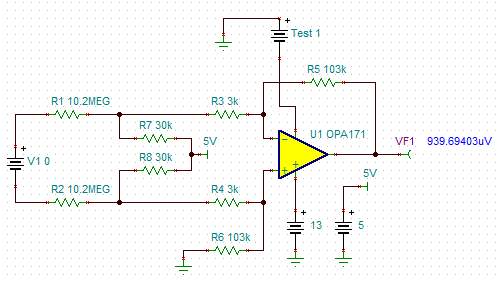Other Parts Discussed in Thread: OPA404, OPA171
Hello All,
I have given a circuit as below and simulated in P-Spice. I am confused of the circuit working behavior.
1. Could anyone help to understand the circuit behavior and the impact of 5V at R5 and R6 node.
2. also explain solved solutions for the voltages displayed in simulation result.
Thanks in advance.
Sathish Kaliappan


